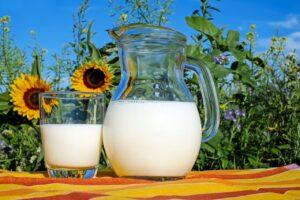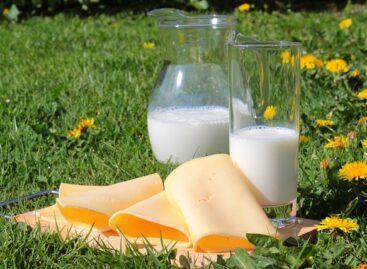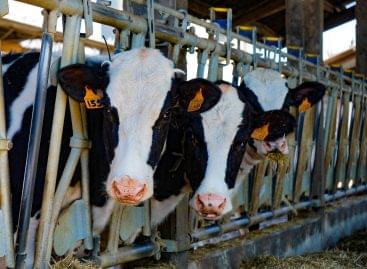MATE’s big milk overview – Let’s get to know our most popular milks more closely
Would you have thought that among the many domesticated animals, milk-producing animals were the first? Did you know that in the early 1900s, goat’s milk was used as a medicinal product in lung sanatoriums? And have you heard of the self-sacrificing type of cattle? Why is it called that? On the occasion of World Milk Day, let’s take a look around and learn more about the composition and health properties of the most popular milks with the help of MATE researchers!
The “healing” goat’s milk
 Nowadays, it may not be classified as one of the most common milks, but it wasn’t always like that! Would you have thought that until the end of the 1800s, you could get goat’s milk in a pharmacy? And did you know that in this period there was a goat farm next to every lung sanatorium, because various diseases affecting the lungs could be effectively prevented with goat’s milk? All of these are due to the antibacterial properties of goat’s milk. However, its positive properties for health do not end there. Basically, it can be said that compared to cow’s milk, it is much richer in essential amino acids, the types of milk protein are different, for this reason some people with milk protein allergies tolerate it well and can consume it. In terms of its vitamin content, the content of vitamin A is much higher, and its protein and fatty acid composition is also much more favorable than that of its more popular companion, cow’s milk.
Nowadays, it may not be classified as one of the most common milks, but it wasn’t always like that! Would you have thought that until the end of the 1800s, you could get goat’s milk in a pharmacy? And did you know that in this period there was a goat farm next to every lung sanatorium, because various diseases affecting the lungs could be effectively prevented with goat’s milk? All of these are due to the antibacterial properties of goat’s milk. However, its positive properties for health do not end there. Basically, it can be said that compared to cow’s milk, it is much richer in essential amino acids, the types of milk protein are different, for this reason some people with milk protein allergies tolerate it well and can consume it. In terms of its vitamin content, the content of vitamin A is much higher, and its protein and fatty acid composition is also much more favorable than that of its more popular companion, cow’s milk.
The most common is cow’s milk
The Holstein Friesian is the most common breed of milk-producing cattle in the world, whose milk is known to everyone, since the milk of this domestic animal is found in the largest number on the shelves of stores. It is an interesting fact that this breed is also called a self-sacrificing breed, as it is able to suppress its own body’s metabolism in order to produce milk.
In addition to the Holstein Friesian, the other most popular breed is the Jersey, whose more concentrated, i.e. milk with more favorable content indicators, is much more popular among food manufacturers than the milk of its other counterparts. The breed’s milk, which has favorable coagulation parameters, is popularly used by the industry for cheese and yogurt production.
Related news
Milk market tensions: the Minister of Agriculture posted about the government’s steps
🎧 Hallgasd a cikket: Lejátszás Szünet Folytatás Leállítás Nyelv: Auto…
Read more >Bóly Plc. has developed a technology for breeding cattle capable of producing premium quality milk.
🎧 Hallgasd a cikket: Lejátszás Szünet Folytatás Leállítás Nyelv: Auto…
Read more >What are you eating today? – Focus on food packaging
🎧 Hallgasd a cikket: Lejátszás Szünet Folytatás Leállítás Nyelv: Auto…
Read more >Related news
New HR assistant helps K&H employees
🎧 Hallgasd a cikket: Lejátszás Szünet Folytatás Leállítás Nyelv: Auto…
Read more >AB InBev invests in Michelob Ultra production in US
🎧 Hallgasd a cikket: Lejátszás Szünet Folytatás Leállítás Nyelv: Auto…
Read more >Lidl To Invest €600m In Spain, Targets 300 Stores In Portugal
🎧 Hallgasd a cikket: Lejátszás Szünet Folytatás Leállítás Nyelv: Auto…
Read more >







